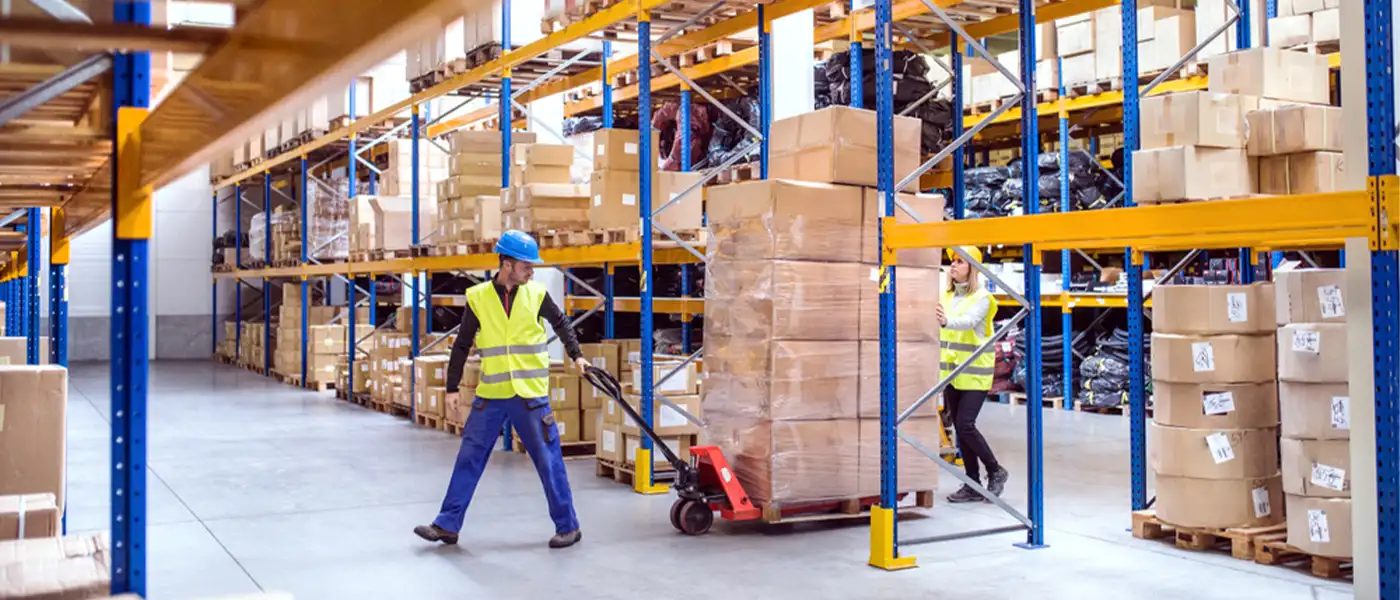Introduction to Shipment Exception
Meeting clients’ projected delivery dates is arguably one of the most significant and complex things you must confront as an e-commerce business owner. You could do your best to deliver ordered things to customers on time, but there’s always the potential of anything going wrong, resulting in an unanticipated delay. This delay is referred to as a delivery or shipment exception in the e-commerce language.
What is a Delivery Exception?
A delivery or shipment exception occurs when a shipment’s delivery date is adjusted at the last moment due to unanticipated circumstances. It is a notification to the consumer that there is a problem with their package while it is in route. Regardless of how advanced current logistics or shipping technology and systems are, courier companies are sure to have issues with some shipments while in transit at some point.
Although there is an unintended delay, it is incredibly frustrating for the consumer. As a result, an e-commerce company must take all necessary precautions to ensure that, irrespective of delays, ordered items reach clients as quickly as feasible. Having stated that, shipments may reach their destination on schedule even if a shipping exception occurs. Such occurrences, however, are incredibly unusual.
E-commerce firms must stay ahead of these notifications to assist you in understanding the problem with any shipment to your clients. If your freight is delayed, you may need to alter your warehouse workforce or tell your clients.
What Happens if Your Package is Delayed in Transit?
Shipment exceptions aren’t necessarily a significant worry for your business. Customers may sometimes experience modest delays, while others experience no delays. However, there are a few distinct instances in which delivery exceptions might cause problems since they result in shipments being returned to the sender.
Here are the possible outcomes if your cargo encounters a delivery exception:
No overall delay
The shipment is still accomplished on schedule, frequently because the problem was not as severe as planned or occurred early in the shipment process, giving the carrier a chance to adjust. Errors that cause parcels to change delivery trucks and bad weather are two of the most typical causes.
A successful but late delivery
Some incidents may cause your delivery to be delayed until the next day or several days later, but the carrier will still complete a successful delivery. The most typical problem in Business-to-Business (B2B) sales is when no one is eligible to sign for a delivery or when the entrances to a place are locked. Another common reason for these and home deliveries is when the driver returns with parcels in their vehicle since it has become too late for distribution.
Sent back to the sender
In some unlucky instances, an exception issue will cause the item to be returned by the carrier. Damage during transit, particularly labeling and barcodes, might also result in refunds.
When this happens, the carrier will usually update the package details.
The Impact of Delivery Exceptions
Delivery exceptions might be disastrous for your company. If an exception causes a delay in delivery, you may have a dissatisfied consumer on your hands.
For example, a damaged or missing package might also lead to a wrong impression. People may believe your transporters and delivery processors are not being cautious enough about the work.
Furthermore, shipment exceptions can cost you extra in delivery management.
Some impacts of shipment exceptions are as follows:
Bad relationship with the customer
Any deviation from on-time delivery can lead to customer attrition and poor ratings, even if the problem lies with the consumer or another consumer previously in the delivery cycle.
Inefficiency
Managing exceptions is time-consuming and redirects resources that you don’t have. Furthermore, many e-commerce organizations, logistics, and courier providers cannot address every shipment exception.
Wasted resources
Each shipment exception leads to delays, resulting in lost revenue.
Loss in overhead
Every extra truck roll or distribution run, as well as every spare time committed by a dispatcher or assistance member of the team, increases your overhead bill.
Types of Delivery Exceptions

There are various kinds of shipment exceptions. Knowing the many obstacles and experiences will help you overcome these issues if you work in logistics.
Some of the most frequent causes of shipment exceptions are:
Incorrect address and label damage
If the shipping tag on a box is damaged or contains the incorrect address, your carrier will be unable to make the delivery. The same is true for labels that are ineligible.
The carrier may contact you to request an updated address; however, this shipment exception may result in the item being recalled to the shipper or sent to the incorrect address.
Ensure that all shipments you send out have firmly attached labels to avoid these delivery exceptions. It would help if you also placed tags on the package or delivery where they are least prone to damage.
Businesses should also ensure that their labeling is correct and legible. Printing the shipping labels instead of writing them is preferable. Always double-check shipping addresses to confirm they fit the information provided by the consumer.
Holidays
Shipping services are less active on federal holidays, so this delivery exemption is possible. Luckily, customers are most understanding of delivery delays caused by national holidays.
Pick-ups and deliveries
Pick-up errors happen when the courier cannot locate the mailing address or the destination for a planned pick-up. In this case, you should resubmit the pick-up order and provide the carrier with an alternative time.
Delivery problems can occur in a variety of settings. For example, the delivery may be unable to be accomplished due to an incorrect address, rough weather, defective labels, or the recipient’s inability to sign for the item.
Loss and damage
Accidents occur despite shipping companies’ safety precautions. When an accident happens in transit, carriers frequently put the item on hold instead of delivering it.
Defective shipments are recalled to the first delivery facility with a faulty note attached in certain circumstances. Make sure your products are adequately packed to reduce the possibility of damage during transit. Shipment losses, like damages, can happen occasionally. Carriers will issue a loss exception if a delivery company discovers a package has been lost and cannot be delivered.
Weather delays
It is nearly impossible to deliver supplies on schedule if there are climatic or natural calamities issues such as storms, earthquakes, landslides, or snowstorms. Such delays are utterly unforeseen and beyond the control of anyone.
However, carriers may transport your shipment to a different safe place if you use more than one distribution center. All carrier providers prioritize security and customer care. Thus most will have a backup strategy and do everything possible to deliver the item on time.
Customs delay
Customs is a governmental agency that regulates the import and export of products inside a particular country. Sometimes a package is delayed due to customs complications, whether it is departing your nation or landing at its destination.
Consequently, customs delays are a form of shipment exception that only applies to overseas shipments.
Paying the required tariffs and fees and providing the necessary papers can speed up the customs procedure. Contact your shipping company for further instructions about customs paperwork.
It is also beneficial to understand the shipping restrictions in your region and the countries to which you wish to ship. If your product is subject to particular laws, it is best to notify buyers that carriers may postpone their delivery due to customs procedures.
The recipient is not available
Some deliveries may demand a signature or can only be deliverable to the recipient. If no one is available to pick up the delivery, the courier service will return it to the fulfillment center. While some carriers immediately return the goods to the vendor, others may choose to retry delivery to the customer the next day. It will alert both sides of the process so the customer is informed that they must be there throughout the delivery.
Inadequate documentation
If your package lacks all the information required to reach its location, you may experience delivery exceptions due to insufficient data. Although regional and ground transport companies are far less likely to meet such delivery exceptions, sea freight is one sort of logistics that necessitates a variety of documentation for the company to control custody and inventory. When the package label does not include the matching barcode, issues can occur owing to insufficient paperwork.
Delays in security or regulation
If your item is refused or incorrectly shipped, it may be stalled or even returned. This can include attempting to export hazardous products unlawfully or if there is a security threat at the destination site. If you don’t match their labeling or other information standards, not only will your item be late, but you won’t get a return or refund for the shipping amount.

How to Handle a Delivery Exception
Shipment exceptions are unavoidable, as we’ve seen. What matters is how your business reacts to them when they occur. Indeed, shipment exceptions can be great opportunities to convert a horrible experience into a pleasant one, lowering potential post-purchase concerns for your consumers and assuring they return.
There are several measures that you can take if you encounter shipment exceptions, some of them being:
Keep track of order statuses
Keeping track of order details for each shipment you ship is the easiest method to stay ahead of delivery exceptions. However, keeping track of each can be tricky if you mail packages in volume.
Notify customers
Notifying your clients about shipment exceptions lets them know you’re handling the matter and doing everything possible to get their things delivered as soon as possible. You can reach out to your clients in various ways to let them realize you haven’t missed their issue.
Contact the carrier
Irrespective of the size of your brand, if you make product buying and delivery feasible, you must be able to trace shipments and investigate the causes of partial shipments.
Furthermore, it would be best if you made it feasible for the consumer to do so. The courier service, for its part, may supply you with some relevant insights, following which you can determine how to handle the matter. For instance, if the carrier issued the exception due to an erroneous destination, you can provide the correct information to your delivery personnel.
Issue refunds or replacement
If the shipment will not arrive at the specified address to the recipient soon, and if there is no simple solution to the shipment exception, ensure offering your customer the choice of receiving a refund or retrying the shipment.
Refund or replacement is your only option when the courier has lost the box or it will take an extended period to deliver the delivery. Online firms must handle both consumer and carrier needs at the same time, so choose carefully.
Ways to Avoid Delivery Exceptions
There are some steps you can take to reduce your chances of experiencing delivery exceptions, such as:
- Follow your carrier’s packaging and labeling instructions to the letter. Be precise if you’re utilizing a shipping option where the fee is dependent on weight and dimensions. Don’t make any assumptions.
- You can have a shipment exception or your product returned if you get it wrong. If you don’t want to travel to the courier service on each occasion you have to ship anything, invest in a scale that allows you to measure each item precisely.
- Use weather-resistant or wrap sheet tags with tape/plastic to avoid label deterioration. During transit, parcels are affected by weather conditions.
- Check that your shipping address is entirely correct. Even minor mistakes might lead to enormous problems.
- Provide your consumers with their package’s tracking information. Tracking allows them to be present at home to collect and sign for their parcel.
- If you plan to provide international shipping, be sure you’re ready and charge appropriately. Learn about international shipping restrictions so you don’t under- or overpay your clients.
- Check that your packages are correctly addressed and tagged. Using a barcode scanner device can help you track packages and reduce the chance of loss.
- When designing routes and determining delivery timings, keep holidays in mind.
- When sending things abroad, always double-check Customs duties and international shipping prices. Also, be specific with product information and characteristics (such as weight), as these affect delivery costs.
- Current software solutions make it simple to locate parcels with scannable barcodes. A carrier, for instance, can use an app-based parcel locator to find an item in their congested delivery car.
- Consider using map-integrated routing technologies. If drivers cannot locate a mailing address, they will be unable to complete the delivery. Routing software coupled with GPS, such as Google Maps, assists drivers in determining where they need to travel.
Conclusion
A lot may happen to cargo while it is en route, and while a delivery or shipment exception is unforeseen and frequently beyond one’s control, it can be highly upsetting for all parties concerned. The best method for e-commerce shop owners to cope with them is to have systems and practices in place to handle shipment exceptions and put clients at rest as they await their purchased things to arrive.
FAQs
Is a shipment exception bad?
While shipment exceptions are usually accidental and frequently unpreventable, they are nonetheless a source of aggravation for clients and must be handled appropriately. As a result, e-commerce businesses must be prepared and have a mechanism to deal with delivery exceptions.
Is the shipment exception and delivery exception the same?
Yes, shipment and delivery exceptions are the same thing. Delivery or shipment exception occurs when unforeseen occurrences alter the delivery timeframe.
What does status exception mean?
The status ‘Exception’ indicates that an unexpected incident is causing a delay in your package’s delivery. Holidays, customs delays, strikes, and adverse weather are a few of these delays.
What does “Delivery exception. No attempt made” mean?
This warning shows when the carrier personnel fails to deliver the package. No attempt could be due to many factors, such as bad weather, vehicle troubles, technical failure, or personal problems on the side of the delivery person.
What do I do if my package has a delivery exception?
The first step is to test your tracking information and contact the courier to learn more. You can notify the client and offer a refund or modify the delivery time based on the information provided by the carrier.






